Blacking hocus-pocus
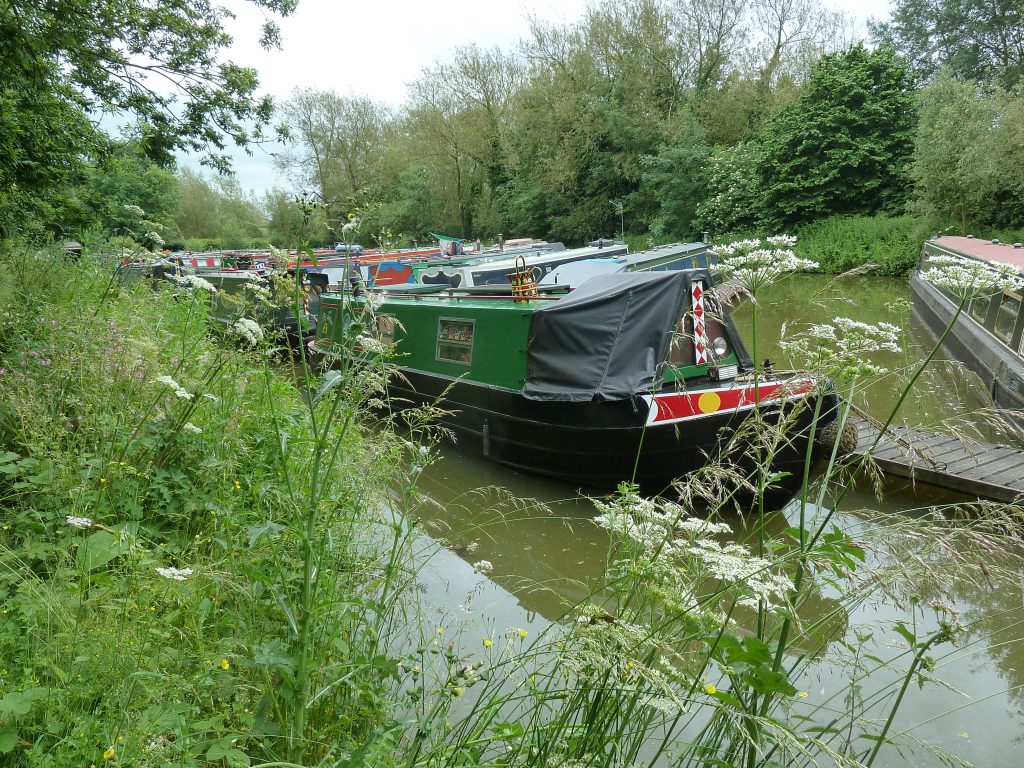
Back in 2016 when I bought Pea Green, she had to have blacking done. This boaty hocus-pocus was a mystery to me and was further compounded by talk of sacrificial anodes. I had no idea about either.
I didn’t see the work being done, as I was away in Armenia and Georgia at the time, so adding to the mystery. All I knew was that Pea Green (or Gwithian as she then was then) had to be dry docked for the work to be completed. I also had a survey done at the same time, as I had foolishly bought the boat without a survey a couple of months earlier. By the time I returned from the Caucuses Pea Green was back on her mooring with the alchemy completed. All l I saw was a bill for a fair bit of money – shame the magic didn’t extend to making that disappear too.
De-bunking blacking
During the intervening two years I have learnt that blacking is neither magical nor mysterious. In fact, it is probably one of the dullest and most straightforward of narrowboat jobs. Blacking is a way of protecting the boat’s steel hull from corrosion by coating it with some sort of heavy black paint. Those who know (or claim to know) suggest it should be done every 2-3 years. Some daring folk leave it for much longer – or don’t bother at all, though this sets of alarm bells if you are buying a boat with no record of blacking…
There are a variety of different paint options, bitumen being the most basic and Epoxy coating being the longest lasting and most expensive. Epoxy requires the boat to be shot blasted back to bare metal and if properly applied is said to last for for 10 years. Should you wish to find out more and lose the will to live I suggest posting a question of one of the narrowboat Facebook pages, I am sure you will be inundated with replies from those who ‘know’.
Out of the water
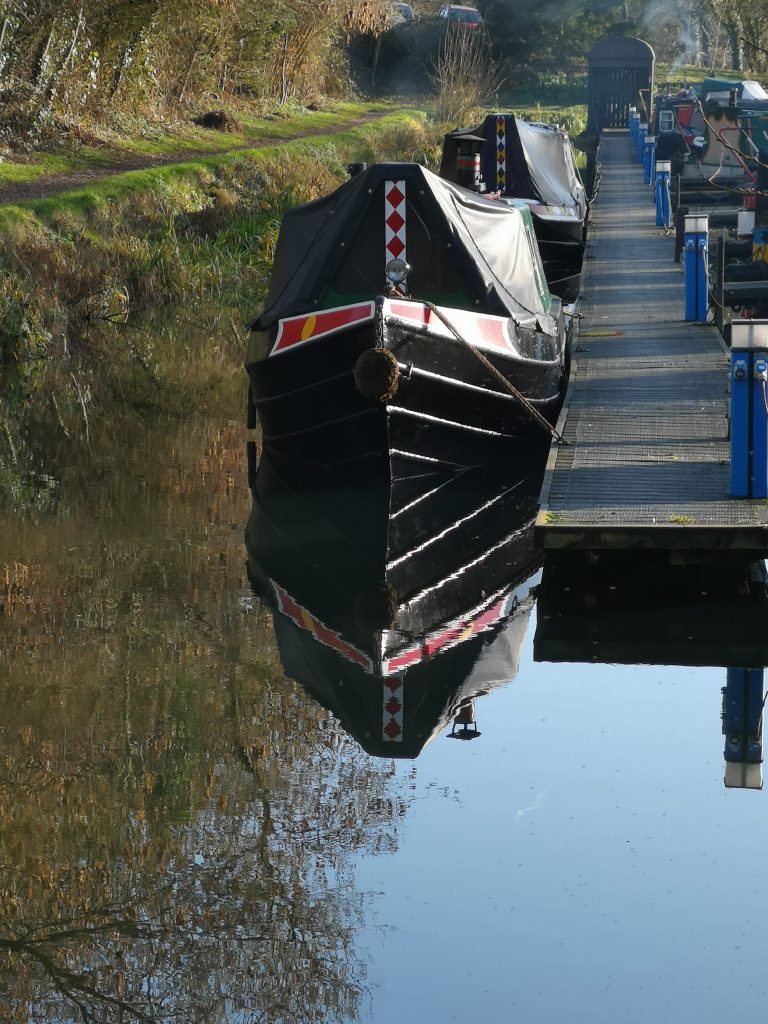
Regular blog readers will know Pea Green is an older boat. Built in 1973, she was an early ‘new’ purpose-built leisure boat. Constructed with a British steel hull and a wooden top, which is now GRP. Due to her age insurance companies insist she now has a hull survey every 5 years, and this requires pulling her out of the water. Although this is costly and a pain, it does mean the hull has a regular check-up.
The survey may not appear relevant to blacking when but it costs a couple of £100 to dry dock the boat it’s a good idea to coordinate blacking with surveys. So, every second time Pea Green is blacked she will be surveyed as well. In September 2018, two and bit years after her first blacking and survey in my ownership it was time to get her in dry dock. (Though her next survey won’t happen until 2021-ish hopefully!)
Booking a spot
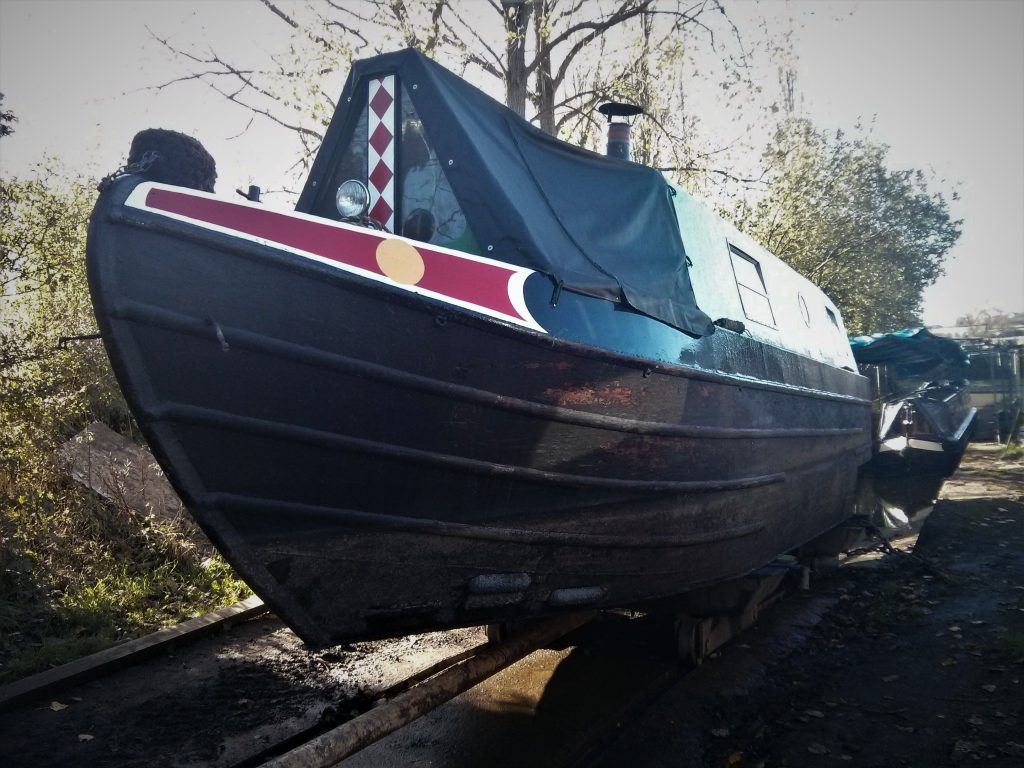
Having decided I didn’t need a wizard-ess to slap on sticky black paint the next step was to book a dry dock. I am quite lucky at Welford as there are options for being pulled out. The local boatshed has an indoor pump-out dry dock, and just up the canal at North Kilworth Wharf there is a ramp pull-out, soon the options will extended once North Kilworth marina has it’s docks up and running. It seemed common sense that having the boat in the open air would allow the paint to dry more quickly. However, the downside of this meant I was at the mercy of erratic British weather… In 2018 this has included a prolonged, very cold winter and a prolonged very hot and dry summer. (I am all for the latter and can live without the former.)
Fingers crossed
Clearly, there was nothing I could do about the weather, though leaving it into September before I booked wasn’t helpful. I finally made it up to North Kilworth and found the first available slot for self-blacking wasn’t until the 3rd week of October. A risky option as the weather could go either way, but the boatyard folk assured me that Pea Green could stay out until the blacking was done. My only other option was to wait until Spring, but after the horrible extreme, never-ending winter of 2018 still looming large in my memory I decided to take a punt on October.
Trundling to North Kilworth
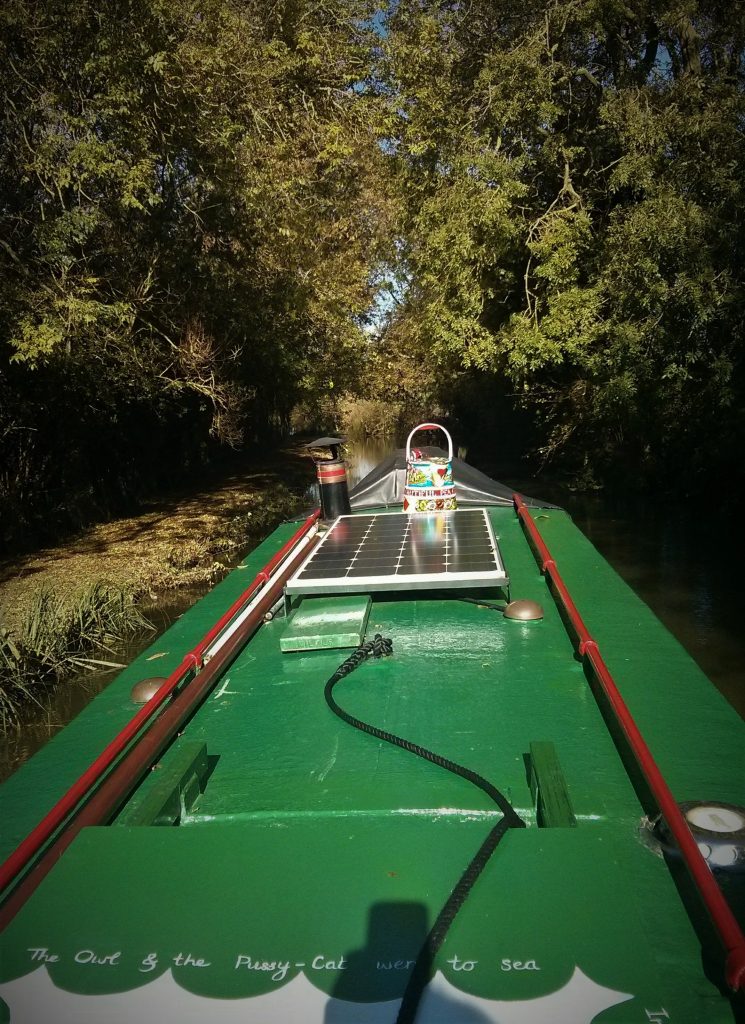
October started wet and miserable and I held my breath watching the forecast. Wet weather continued into the second week which was full of torrential rain and winds. By the third week I couldn’t believe my luck as I dry weather was forecast. On a sunny October Sunday I trundled Pea Green up to North Kilworth. Leaving her opposite the wharf, ready to be pulled out the next morning.
Precarious tea-making
Next day, with trepidation, I turned up at the wharf to see my boat out of the water for the first time. She had been hauled up a ramp on dollies and looked so much bigger than I had anticipated. I think I had half expected holes or dents or monsters of the deep, which was quite ridiculous. Instead, I was pleasantly surprised to see my old boat high and dry and intact, with no obvious rust. I had thought I would be able to get onboard to use the cooker to make drinks, but the angle of the ramp and the height of the boat made it obvious this was not going to happen.
First inspection
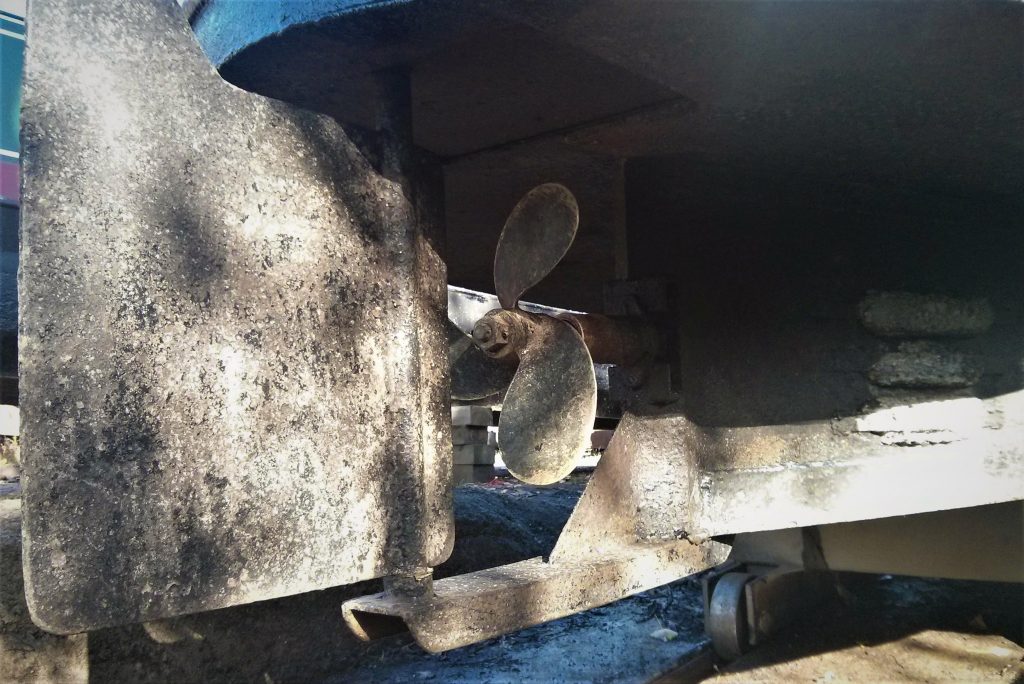
Pea Green had already been jet washed and was dry by the time I arrived. Accompanied by one of the wharf staff we had a walk around inspection of Pea Green. He knowingly gave it a prod here and there and tired to wobble the rudder and propeller. (This I guess is the equivalent of an IT person’s turning the computer off and on.) The rudder and propeller looked good. Plus there was enough life left in the sacrificial anodes that they didn’t need to be replaced. At £50 an anode this felt like a minor financial miracle.
Sacrificial anodes
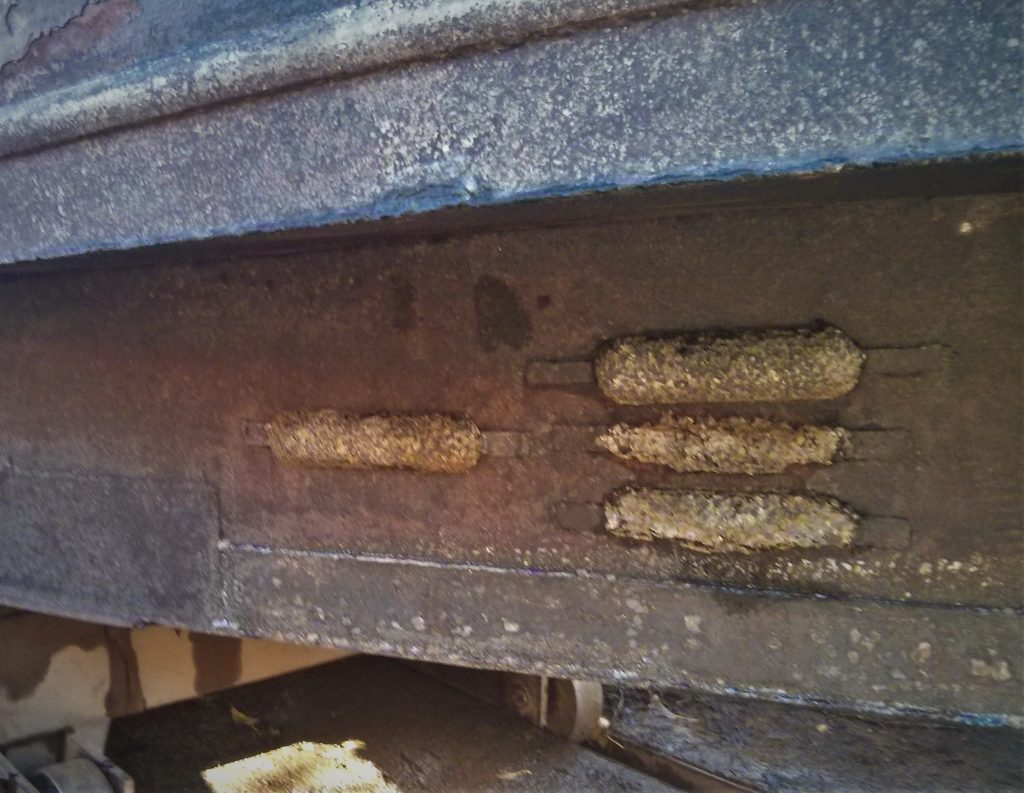
Sacrificial anodes were another of those mysterious boat related things I had no idea about. My only knowledge of sacrifice was in historical tales of the Incas or other ancient civilisations. The sacrificial anodes on a boat are far less grisly. They are nothing more than lumps of magnesium welded below the waterline on the sides of the boat. As electrical current passes through the water the magnesium is eaten away first, rather than the steel of the hull. Pea Green had a number of anodes still looking fairly good. I don’t plug into the electricity in the marina so the consensus was that I wouldn’t need new ones until next time. I nodded at this, pretending to understand the whole water/electric/anode thing…
Slapping on the blacking
With the inspection done it was time to get going with the bitumen. A 5 litre tin was opened and white spirit added to the thick black gloop. Opinion differs on whether you should use a roller or a brush. I opted for a brush. This seemed to be the best way to get into the uneven surface of the metal. As mentioned this isn’t a difficult job, after all the blacking is largely below the water. Though it does require crawling around under the swim of the boat at the back. It also gave me a chance to see the welding that had been done before. People have told me that I needn’t worry about my boat too much as the steel is British. I am not really sure whether this is just patriotic fervour or rooted in facts about the quality of 1970s British steel!
Blacking the base-plate – or not….
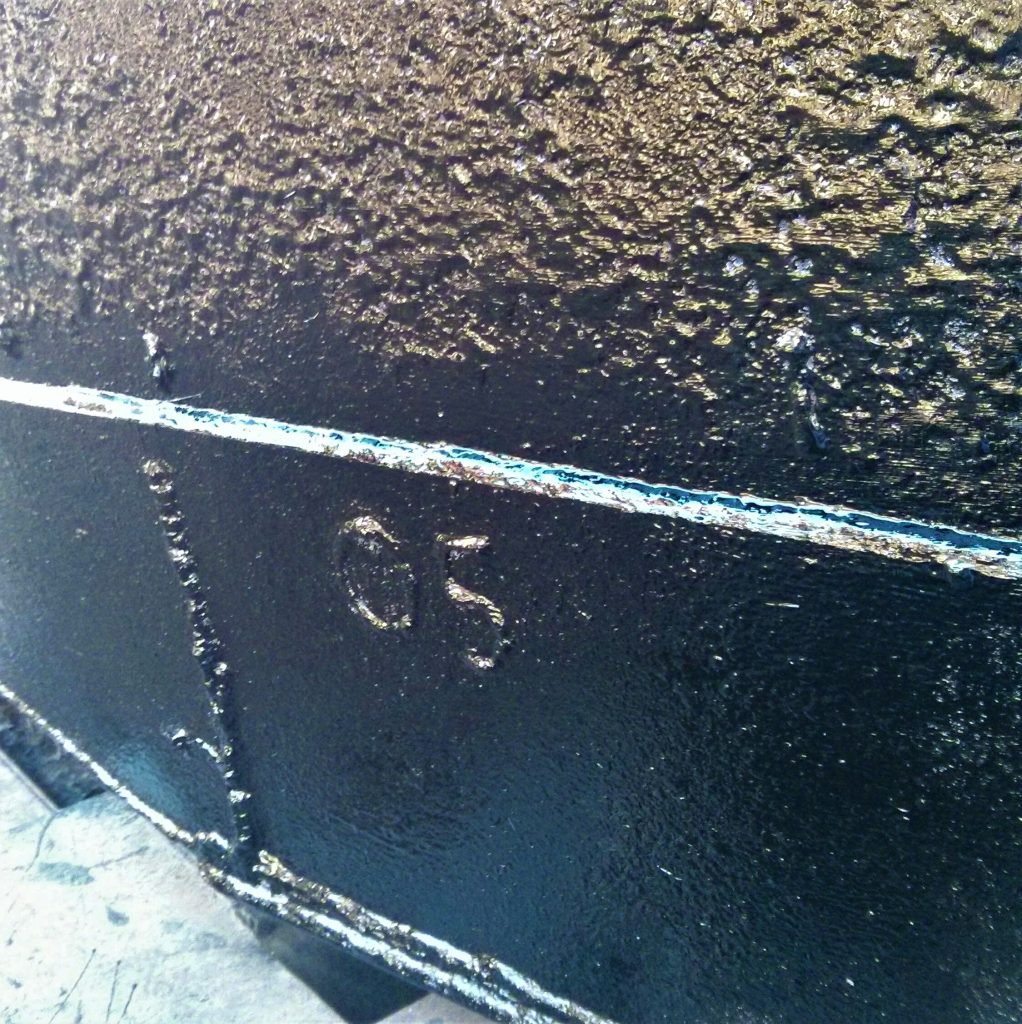
One bit of the boat I didn’t do was the bottom plate. Again, it seems that opinion is divided on whether this should be blacked or not. At North Kilworth it wouldn’t have been an option as I couldn’t physically reach it. The general view is it is the waterline that needs the most protection. As a result, very few people black the bottom plate of the boat. I did attempt to look underneath and take a photo. The result was a grey metal blurr.
Job done
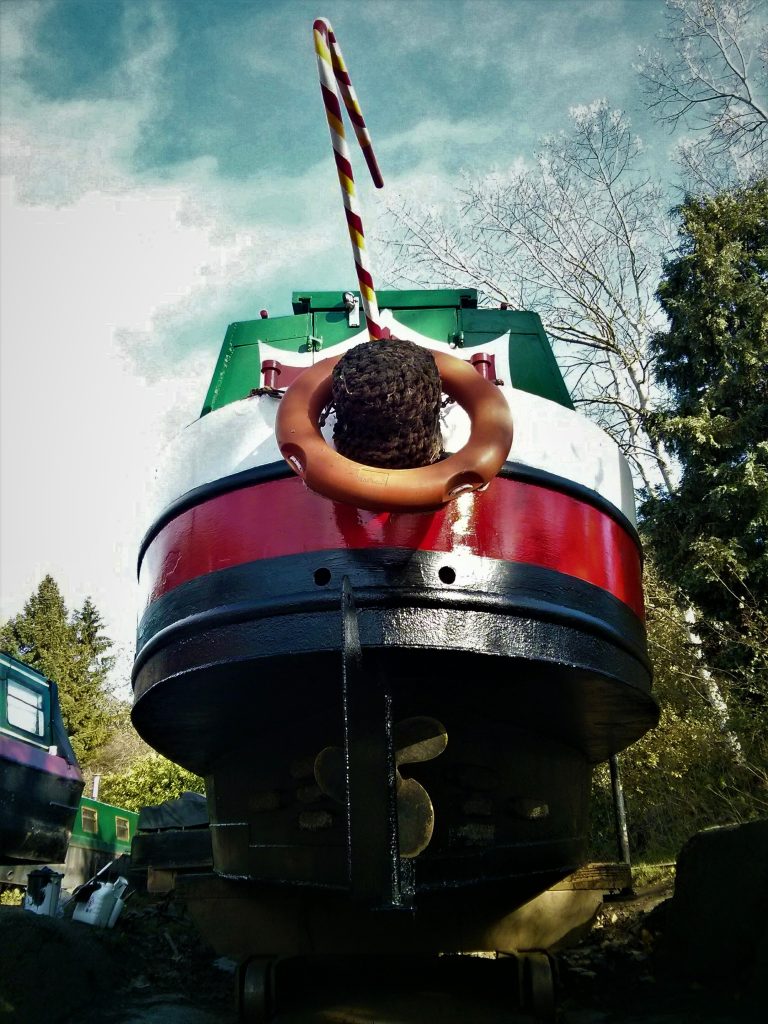
It only took a couple of hours to put on the first coat. After all my boat is only 32 feet long and it was a moment of being grateful for not having a 72ft boat…. Next day I headed back for coat number two, and again was lucky with warm dry October weather. Sage advice was to leave the boat out as long as possible to allow the paint to cure. After the second coat on day two I spent day three re-painting my tunnel lines. This meant she didn’t go back into the water until Thursday.
Trundling back to Welford
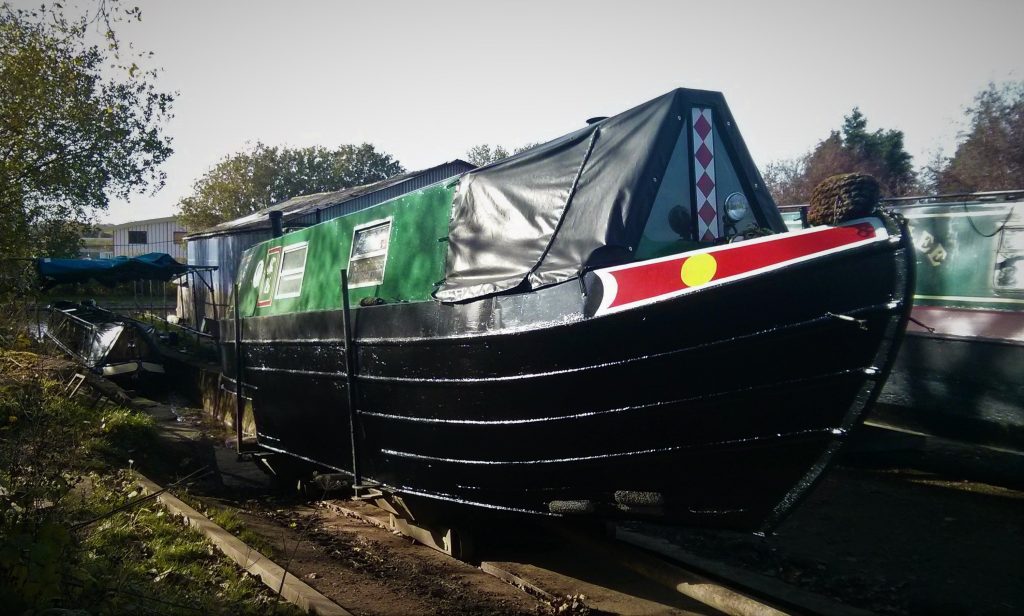
On Friday morning I trundled Pea Green back to Welford. I felt like the boat should have a protective barrage around her to stop the blacking get scraped or knocked. A bit like wearing brand new shiny shoes. Amazingly, I made it back into Welford through the lock without doing my usual trick of bouncing off the entrance. Clearly this happened as I had no handy gongoozling audience!
Hopefully, with a bit of luck I won’t be seeing the bottom of Pea Green again for another two years. Though I have started saving now as she will need anodes, a survey and blacking all at the same time…
Ah Pea Green is looking very smart with her new black bottom.
My boat is of a similar age and when she was pulled out/inspected last year the surveyor commented on the excellent condition of the hull, so perhaps there is some true in the quality of the steel used around that period!
Yes, I think you maybe right. People always seem to say that about 1970s British steel. It just seems to be inconflict with my childhood memories of ‘friday afternoon’ jobs and the three day week… ?? Hope you are well and thanks, as always for read and commenting. Kay
Another enjoyable episode in your wonderful watery saga ! Glad you were able to get away for the New year …you missed nothing here ! Looking forward to the next informative essay and hoping you have another successful and enjoyable season . cheers for now , Pat
PS couldn’t resist thinking that you must have been glad to get to the bottom of things !
Thanks for taking the time to read, Pat! Hahahaha… yes v pleased to get to the bottom of things…. *groan*…..